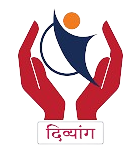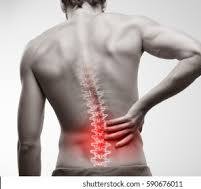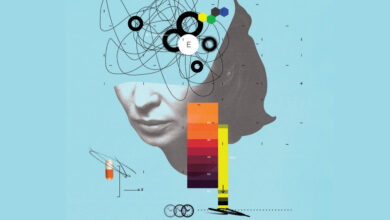Pain Management for People with Scoliosis


Scoliosis, a condition characterized by an abnormal lateral curvature of the spine, affects millions of people worldwide. While some individuals with scoliosis experience mild symptoms, others may endure significant pain and discomfort, impacting their quality of life. Effective pain management strategies are crucial for those living with scoliosis to maintain functionality and improve their overall well-being. This article explores various pain management approaches for individuals with scoliosis, including medical treatments, physical therapy, lifestyle modifications, and alternative therapies.
Understanding Scoliosis and Pain
Scoliosis can develop during childhood or adolescence (idiopathic scoliosis) or result from degenerative changes in adults (degenerative scoliosis). The severity of the spinal curvature often dictates the level of pain experienced. Factors contributing to pain in scoliosis include muscle imbalances, nerve compression, and joint stress. Additionally, the asymmetrical posture associated with scoliosis can lead to secondary issues such as headaches, fatigue, and reduced mobility.
Medical Treatments for Scoliosis-Related Pain
- Medications:
- Nonsteroidal Anti-Inflammatory Drugs (NSAIDs): These medications, such as ibuprofen and naproxen, can help reduce inflammation and alleviate pain.
- Analgesics: Over-the-counter pain relievers like acetaminophen can provide temporary relief from mild to moderate pain.
- Muscle Relaxants: For individuals experiencing muscle spasms, muscle relaxants may be prescribed to ease discomfort.
- Injections:
- Corticosteroid Injections: These can be administered to reduce inflammation and pain in specific areas, such as the facet joints or around irritated nerves.
- Epidural Steroid Injections: These injections can help manage radicular pain (pain radiating from the spine to other areas) caused by nerve compression.
- Surgery:
- In severe cases, surgical intervention may be necessary to correct the spinal curvature and alleviate pain. Procedures such as spinal fusion can stabilize the spine and reduce nerve compression.
Physical Therapy and Exercise
Physical therapy plays a pivotal role in managing scoliosis-related pain. A physical therapist can design a personalized exercise program to address muscle imbalances, improve posture, and enhance flexibility. Key components of physical therapy for scoliosis include:
- Stretching Exercises: Regular stretching helps maintain flexibility and reduce muscle tension. Focus areas include the hamstrings, hip flexors, and muscles along the spine.
- Strengthening Exercises: Strengthening the core muscles, including the abdominal and back muscles, provides better support for the spine and reduces the load on the vertebral column.
- Postural Training: Learning proper body mechanics and posture can minimize strain on the spine and alleviate pain. Physical therapists teach techniques for sitting, standing, and lifting to promote spinal alignment.
- Breathing Exercises: Deep breathing exercises can help expand the chest and improve lung function, which may be restricted due to the curvature of the spine.
Lifestyle Modifications
Incorporating certain lifestyle changes can significantly impact pain management for individuals with scoliosis. These modifications include:
- Ergonomic Adjustments: Ensuring that workspaces and home environments are ergonomically friendly can reduce strain on the spine. This includes using supportive chairs, adjustable desks, and proper computer screen placement.
- Weight Management: Maintaining a healthy weight is crucial to reduce the load on the spine and prevent further curvature progression. A balanced diet and regular exercise contribute to overall well-being.
- Sleep Hygiene: Investing in a supportive mattress and pillows can improve sleep quality and reduce pain. Sleeping positions that promote spinal alignment, such as side sleeping with a pillow between the knees, are recommended.
- Pain Management Techniques: Incorporating relaxation techniques such as deep breathing, meditation, and mindfulness can help manage chronic pain. Stress reduction plays a vital role in overall pain perception.
Alternative Therapies
In addition to conventional treatments, several alternative therapies can offer relief from scoliosis-related pain:
- Chiropractic Care: Chiropractors use manual adjustments to improve spinal alignment and relieve pain. It is essential to seek care from a chiropractor experienced in treating scoliosis.
- Acupuncture: This ancient Chinese practice involves inserting thin needles into specific points on the body to stimulate energy flow and reduce pain. Acupuncture has shown promising results in pain management for various conditions, including scoliosis.
- Massage Therapy: Therapeutic massage can alleviate muscle tension, improve circulation, and reduce pain. Techniques such as myofascial release and deep tissue massage are particularly beneficial for scoliosis patients.
- Yoga and Pilates: These mind-body practices emphasize flexibility, strength, and balance. Modified yoga and Pilates routines, under the guidance of trained instructors, can help manage scoliosis-related pain and improve posture.
Nutrition and Pain Management
Nutrition plays a supportive role in managing pain and inflammation associated with scoliosis. Certain dietary choices can have a positive impact on overall health and pain levels:
- Anti-Inflammatory Foods: Incorporating foods rich in omega-3 fatty acids (found in fish, flaxseeds, and walnuts), antioxidants (found in fruits and vegetables), and anti-inflammatory spices (such as turmeric and ginger) can help reduce inflammation and pain.
- Calcium and Vitamin D: These nutrients are essential for bone health. Adequate calcium and vitamin D intake can support spinal integrity and reduce the risk of further complications.
- Hydration: Staying well-hydrated supports overall health and can help maintain the elasticity of spinal discs.
Psychological Support
Chronic pain can take a toll on mental health, leading to anxiety, depression, and reduced quality of life. Psychological support is an integral part of comprehensive pain management for individuals with scoliosis:
- Cognitive-Behavioral Therapy (CBT): CBT helps individuals develop coping strategies, manage pain-related thoughts, and improve emotional well-being.
- Support Groups: Joining support groups or connecting with others who have scoliosis can provide emotional support, shared experiences, and practical advice for managing pain.
- Mindfulness and Relaxation Techniques: Practicing mindfulness, guided imagery, and relaxation exercises can reduce stress and improve pain management.
Conclusion
Effective pain management for people with scoliosis requires a multifaceted approach that combines medical treatments, physical therapy, lifestyle modifications, alternative therapies, nutrition, and psychological support. By addressing the physical, emotional, and lifestyle aspects of pain, individuals with scoliosis can achieve better treatment pain control and improve their overall quality of life. It is essential for those living with scoliosis to work closely with healthcare professionals to develop a personalized pain management plan that meets their unique needs and promotes long-term well-being.










